If there was ever a sign that things aren’t getting better, it’s the first sentence of our best-of article from last year: “In terms of worldwide events and homegrown politics, 2015 has mostly been a year of bury-your-head-in-the-sand horrors.” It’s not worth enumerating the reasons why this has remained true for 2016. Instead, let’s move to a note of positivity: the past twelve months have been especially strong for North American theatrical releases, inspiring waves of excitement and sighs of relief in our film critical circles. And while the film that landed in our top spot last year—In Jackson Heights, Frederick Wiseman’s typically soft-spoken hymn to American diversity—feels perhaps more politically urgent than any of the titles below, each of the films that made the cut this year is a singular work of art that stands in poignant contrast to a mass culture that seems to have fallen down a rabbit hole of crassness. In holding up these films—which hail from Belgium, Brazil, Germany, South Korea, Thailand, United States, and the U.K.—we hope to direct our readers to the kinds of beauty and righteousness that drove us to love this medium in the first place. We will continue to do so throughout 2017.
As always, the top films of the year were determined by polling our frequent contributors (those who wrote for us at least twice during the calendar year). Each writer’s top-ranked film received ten points, their second getting nine points, and so on.
[Capsules below written by Jordan Cronk, Leo Goldsmith, Eric Hynes, Michael Koresky, Adam Nayman, Max Nelson, Emma Piper-Burket, Jeff Reichert, Michael Sicinski, Chris Wisniewski, Daniel Witkin, and Genevieve Yue.]
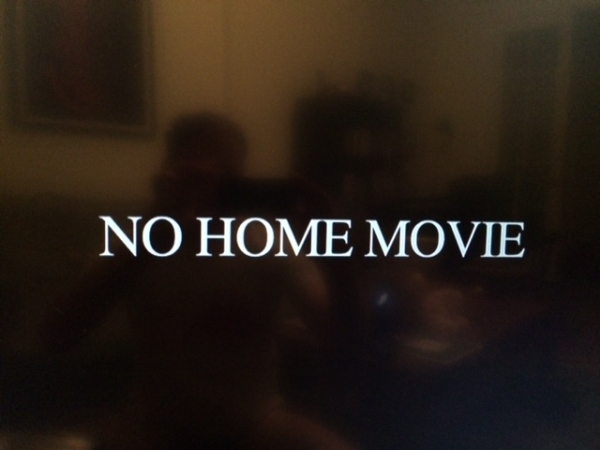
1. No Home Movie
Little can prepare a viewer for the rawness of No Home Movie, the last film by the extraordinary Chantal Akerman. Like the spindly tree lashed by desert winds in the film’s first, unending shot, we are laid bare by this painfully intimate documentary about the final year of the filmmaker’s mother’s life. To say the film is “about” their relationship, one that preoccupied Akerman for the entirety of her brilliant and too-short career, isn’t quite right, nor would it suffice to describe their many conversations, from how much her mother is eating to her troubled memory of fleeing the pogroms in Poland. Instead No Home Movie, shot on a digital camera often balanced haphazardly on a kitchen counter or poised over a laptop, places us at Akerman’s side, sometimes in her hand, even if the image is no more than a pixelated jumble of passing landscape and blown-out sound. What appears as technical roughness is actually emotional urgency: the director’s fervent desire to hold on to her images, no matter how hastily composed, as long as she can, knowing all the while that they will eventually fade. The result is a grief that hits as if it’s your own. This is no ordinary home movie, and for Akerman, who took her own life a year after her mother’s passing, there is no longer a home to return to. —GY
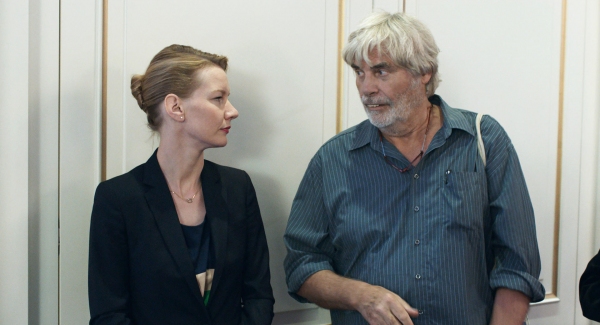
2. Toni Erdmann
When a movie reaches a level of such mass adoration and critical acclaim as Toni Erdmann, it becomes useful to take a step back—both to try and figure out what nerve it has hit and also to evaluate the film on its own terms outside of the hype it’s aroused. It’s worth noting that the two times I saw German director Maren Ade’s exhilarating film, I had similar feelings of elation, the sense that I was watching something that was both grounded in contemporary experience and completely out of this world, regardless of the different viewing conditions: the first in a nearly empty screening room, the second a packed New York Film Festival audience of more than a thousand viewers, many laughing with the kind of delighted uproar one might hear more often if Hollywood still made funny movies. That Maren Ade’s sprawling, meticulously messy comedy of manners manages to make us care deeply about characters who are essentially archetypes—broadly, a prankster father trying to teach his corporate-climbing daughter, a consultant tasked with evaluating a company’s outsourcing options, to loosen up—is key to its unusual charm, but more importantly, it puts them at the center of a non-moralizing morality play about economic global realities that comes by its laughs honestly and unpredictably. The political engagement of Toni Erdmann wouldn’t matter, of course, if the film weren’t so impeccably written, blocked, structured, choreographed, and acted (by the extraordinary Sandra Hüller and Peter Simonischek), the result of a long, intensive rehearsal process that makes the film feel not just lived in but profoundly felt. The last third of the film—jumping from one out-of-left-field yet textually coherent set piece to the next—constitutes the kind of cinematic miracle that cannot be discounted, especially in an international cinematic climate where rote is king. —MK
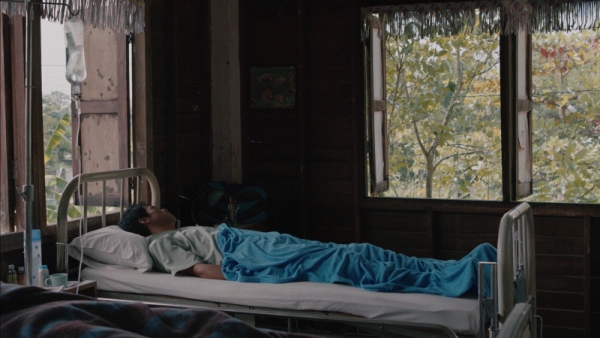
3. Cemetery of Splendor
Joe knows nocturnal animals: the lurking tiger in Tropical Malady and red-eyed monkey men of Uncle Boonmee Who Can Recall His Past Lives belong on any list of the cinema’s most sweetly creepy creatures. In Cemetery of Splendor, the night shift is populated entirely by people: Apichatpong Weerasethakul’s splendid seventh feature includes a company of soldiers slumbering beneath translucent tubes whose shifting color values, from deep red to serene aquamarine, represent their respective subconscious palettes. It’s a perfect image for a filmmaker who always likes to pull viewers into dream worlds, and between its deployment of sleeping sickness and guided mediation as plot points, Cemetery of Splendor is the Thai master’s most overtly hypnotic movie to date. Considering that this subtly yet sharply political movie’s not-so-buried subject is the narcotizing effect of governmental repression—evoked in shots of the citizenry shuffling through shopping malls and movie theaters with eyes wide shut—the drowsiness has a metaphorical dimension deepened by August's referendum vote to legitimize the authority of Thailand's ruling military regime. —AN

4. Cameraperson
There are many documentary films one could cite that interrogate the myriad ways in which introducing a camera into any situation creates unpredictable, rippling effects, like throwing a stone into a pond. What makes Kirsten Johnson’s Cameraperson nearly unique among this lineage of films is her emphasis on the person holding the camera, and how her interventions affect the subject, and how, if we watch the way the camera is wielded, divorced from the context of narrative drive, we can clearly see how the subjects before her lens affect her right back. Cameraperson is a perfect film for today, in that it presents a robust rejoinder to the pabulum common in contemporary discourse that “now that we have cameras in our phones, we are all filmmakers." Filmmaking isn’t just waving a lens in a certain direction for a certain period of time. It is, especially in nonfiction filmmaking, the rigorous application of a focused method of looking at the world through a lens. Made up of many dissociated, unused shots from the course of this longtime cinematographer’s career, Cameraperson shows how a great cameraperson sees over and over, with each revelatory image, with each fleeting moment captured square in the frame. Her shots are all tightly linked by a structural device—white titles noting the location of events on black—that at first seems like no structure at all. Yet over the course of the film, Johnson constructs her collected odds and ends into an intense, incantatory experience that leaves her bare, even though she only appears once briefly onscreen. The net effect of Cameraperson leaves one realizing that to be a great cameraperson one must be a certain kind of person first. Probably a great one. To go from being a great cameraperson to making a film of this caliber, well… —JR
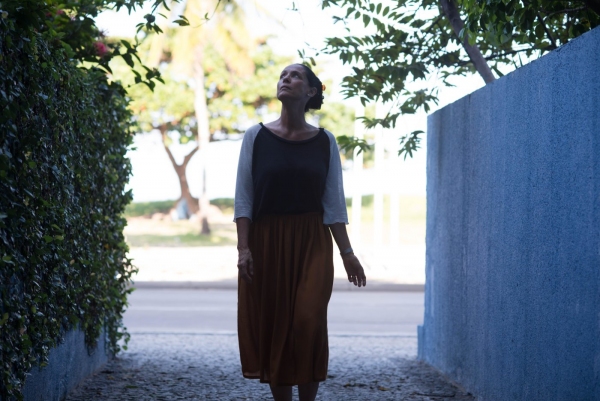
5. Aquarius
On the red carpet just moments before the world premiere of Aquarius, director Kleber Mendonça Filho, lead actress Sonia Braga, and other key personnel from the film staged a protest in front of the cameras, holding up signs decrying the impeachment of President Dilma Rousseff as a coup d’etat. One sign read, “Brazil is not a democracy anymore.” This is a claim that should resonate with any Brazilian with a political memory, and that’s why Aquarius is a dangerous film. Mendonça’s second feature depicts Braga as Clara, a leftist intellectual and former music critic who has survived breast cancer as well as the 20-year right-wing military government that was supposed to stamp out undesirables like her. The question Aquarius poses (and answers in the affirmative, without an iota of cynicism) is whether Clara can weather the next storm: neoliberal capitalism. A ruthless real estate firm is trying to force Clara out of her beloved beachfront apartment so they can demolish it and build luxury condominiums. Aquarius is a film about the most vital weapon in a radical’s arsenal: historical memory. It is precisely Mendonça’s ability to articulate the Then with the Now that rapacious neoconservatism demands. So whatever you do, don’t claim continuity, don’t observe an ongoing cycle of oppression. This is a film about the struggle over an edifice of the past. Preserve it, or knock it down? —MS
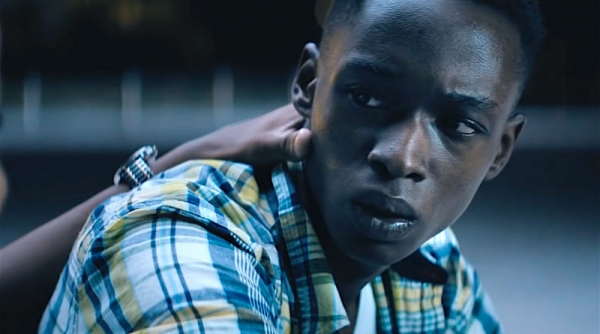
6. Moonlight
We all have stories about how we became who we are. This is what my family was like; this is what my neighborhood, school, and friends were like; these are the moments that made me the person I am today. Moonlight isolates three apparently formative stages in the life of Chiron, an African-American boy raised by a single mother in the working-class suburbs of Miami. As a bullied adolescent he’s shepherded and protected by a local drug dealer; as a gangly teen his tentative, furtive exploration of homosexuality gets viciously punished; and as a muscular, hypermasculine adult, he re-encounters his teenaged object of affection and desire. Yet what director Barry Jenkins asserts with his second feature, which he adapted from an unproduced play by Tarell Alvin McCraney, is that even defining moments don’t always yield clear definitions, or a clean narrative, of ourselves. Three different, physically distinct actors—Alex Hibbert, Ashton Sanders, and Trevante Rhodes—play Chiron in three chapters titled after the different names he’s called: Little, Chiron, Black. And though the film largely plays out from his point of view, it’s one defined by ambiguities and irresolution. Chiron may be a product of where he comes from, struggling to reconcile who he’s supposed to be as a black male with what he wants and needs, but he’s also not remotely finished becoming. This is how a film of such crucial, culture-shifting specificity manages to be so overwhelmingly universal. As a portrait of masculinity, Moonlight is both unflinching and empathetic. And as an exploration of inchoate desire, it is wise, generous, and cuts very, very deep. —EH
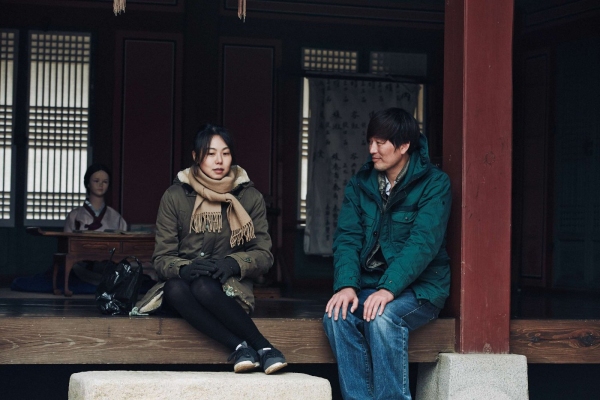
7. Right Now, Wrong Then (tie)
About 40 minutes into Hong Sang-soo’s Right Now, Wrong Then, the indefatigable South Korean filmmaker’s 17th feature in about two decades, we watch Yoon Hee-jeong (Kim Min-hee) withdraw from her peers and retreat into her own head. Such a universal experience is rarely captured so clearly and confidently in cinema, unfolding in real time over the course of a single, unbroken take as the inebriated Yoon wrenchingly looks on as the true nature of her would-be swain, Ham Cheon-soo (Jeong Jae-yeong), is exposed by her well-meaning friends. The scene’s sophistication is belied by the economy of its means: the moment-to-moment commitment of Kim’s performance and Hong’s Ozu-like gift for achieving emotional transparency through framing, isolating his subject through successive zooms before pulling back to reveal her now out of place among her friends. Not long after Kim’s burnout, the film resets to start over from the beginning, and—exactly an hour later—we’re returned to the same time and place to observe Ham laid bare again in a manner at once crisply symmetrical and wholly unforeseeable. Dogged throughout his entire career by accusations of repeating himself, director Hong has at last made a film that does precisely that, and the result is a mid-career masterwork that elegantly conjoins Goofus and Gallant in Janus-like harmony. Accordingly, it works as a statement of purpose of sorts for the filmmaker, a twist on Vivian Mercier’s description of Waiting for Godot as “a play in which nothing happens, twice.” In Hong’s cinema, nothing never happens, even in the most outwardly static of moments. In this absence, his cup runneth over.—DW

7. Sunset Song (tie)
Terence Davies has always been drawn to stifling domestic situations, from the Liverpool family bullied by a tyrannical patriarch in Distant Voices, Still Lives to the loveless marriage at the center of The Deep Blue Sea. His movies are so lush in their visual textures, so melancholic in tone, so full of beautiful and haunting music (usually classical pieces or traditionals), and so enveloping in their camera movements that it’s easy to forget how full they are of violence and brutality. Sunset Song—Davies’s adaptation of Lewis Grassic Gibbon’s 1932 novel about a young woman coming of age on a fictional Scottish estate called Kinraddie—is the toughest and most harrowing film he’s made, and John Guthrie (Peter Mullan), the abusive father who threatens and haunts the movie’s heroine, is one of his most fearsome characters. For much of the film’s first half, Chris Guthrie (Agyness Deyn) watches her father beat her brother and force her mother into sexual servitude. Only when he dies does she have a chance to escape her circumstances and take up a happier variety of married life with a young man named Ewan (Kevin Guthrie). But when World War I encroaches on their remote village, Ewan too proves susceptible to the kinds of cruelty and aggression Chris thought she’d escaped. Like Rachel Weisz in The Deep Blue Sea or Cynthia Nixon in Davies’s upcoming A Quiet Passion, Deyn is the core of emotional energy in Sunset Song—the center from which all the movie’s drama extends. Working her family’s farm, walking through the fields, looking over her body in a mirror, falling in love with her husband and reacting to the turn his temper takes: Deyn’s trajectory through the movie is one of a person’s spirit resisting and rebelling against the forces by which it’s been constrained. Like several of Davies’s movies, Sunset Song ends tragically; but it’s a testament to Davies and Deyn that, together, they could make such a bleak vision seem so full of vigor, warmth, and life. —MN
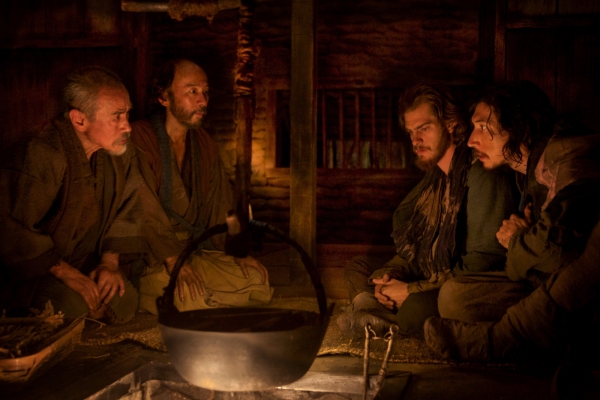
8. Silence
How do we wrap our minds around Martin Scorsese’s long-gestating religious epic Silence? What do we make of Andrew Garfield’s naively devout Father Rodrigues? Does his obstinate conviction that he has a religious and moral duty to spread the good news of his Lord and savior to the far reaches of Japan represent a triumph of piety or the worst of colonial hubris? Does he come to Japan to save the souls of the Japanese or condemn their human bodies to unspeakable suffering? How do we assess his adversary, the inquisitor so deftly played by Issey Ogata? Do we see him as an anticolonial pragmatist or a murderous monster? Does he defend Japan or terrorize it? Who is the Jesus who speaks to Rodrigues in voiceover? Is He the compassionate Messiah who grieves at the suffering of his followers? Or are these the delusions of a vain, desperate man driven to the point of psychosis, seeking to rationalize decisions he cannot justify morally or theologically? Does He really exist, and if so, what does Rodrigues owe him, or the people He died to save? And how, when processing all of this uncertainty, do we grapple with the aesthetic and technical assurance of this film—the masterly rigor and virtuosity, the breathtaking cinematography by Rodrigo Prieto that confers astonishing beauty on images of genuine horror? What can we say about it? Perhaps only this: Silence is a movie that will surely grow in stature in the years to come, a great achievement by an American master that we will wrestle with long after everyone has forgotten about ranking their top ten lists of 2016. —CW
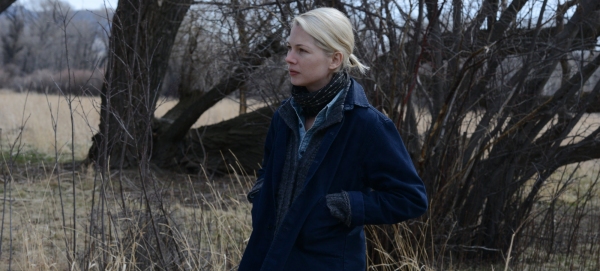
9. Certain Women (tie)
The pacing of Kelly Reichardt’s understated triptych feels uniquely human; each scene necessitates the viewer’s absolute presence and engagement with the current moment as it unfolds. Days or weeks pass by onscreen, but it is the accumulation of individual scenes that make the impression, the cuts creating a rhythm that is deeply familiar yet specific to each character. Adapted from three short stories by Maile Meloy, Certain Women could be thought of as three distinct studies of different people, played by Laura Dern, Michelle Williams, and Lily Gladstone, with an excellent supporting cast including Jared Harris and Kristen Stewart. Each woman is at a different juncture in her life, each isolated in a state of mind that puts her in strange harmony with the physical vastness of her surroundings. But the resulting film feels more like a single unified portrait of individual being and feeling in a wide-open space. Reichardt, who also edited the film, brings the textures and atmosphere of the contemporary American West—Montana, specifically—so close that you can practically smell it: the dampness underfoot, the chill in the air, the emotional anticipation of barely identified longings and thoughts just starting to form. —EPB
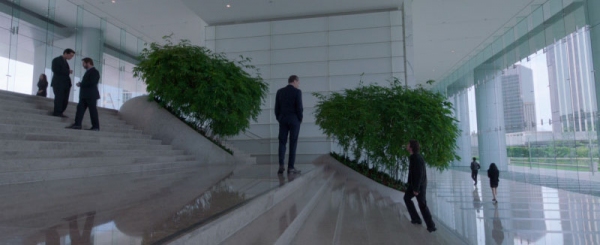
9. Knight of Cups (tie)
Rather than retreat following the contentiously received To the Wonder (Reverse Shot’s #1 of 2013), the newly prolific Terrence Malick burrowed deeper into the soul of his artistry with Knight of Cups, a fractured, prismatic meditation on lust, creativity, and the quest for divine atonement in the face of an increasingly secularized world. On the one hand it was one of the year’s least topical, most blinkered films, with Christian Bale’s wayward screenwriter standing as a convenient avatar for white male self-pity and the plight of the privileged. On another it was perhaps American cinema’s purest recent expression of man’s fraught, existential journey toward enlightenment, as well as its author’s most radically constructed, polytheistic morality tale to date. With allusions to New Testament apocrypha and Middle Eastern philosophy, Malick’s contemporary retelling of The Pilgrim’s Progress, divided into eight chapters corresponding with the cards of a tarot deck (the “Knight of Cups” representing man’s romantic duality), braids the director’s spiritual compulsions and increasingly associative montage into a free-floating aesthetic experience, as ideologically reflexive as it is impressionistically rendered. With a documentarian’s eye, Malick captures the graceful movements of his Hollywood stars with the same resplendent intimacy as he does the suspended realities of real-life Skid Row denizens, envisioning contemporary Los Angeles not as a boundless utopia but an endless expanse of vacant studio lots and sterile domestic interiors––less a place of fame and fortune than a city of fallen angels. —JC
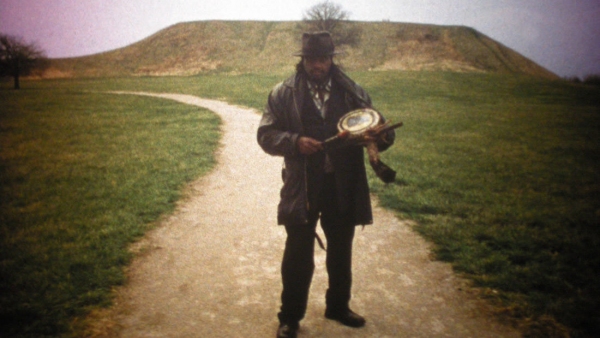
10. The Illinois Parables
Although the film is just an hour long, The Illinois Parables’ running time is capacious enough for filmmaker Deborah Stratman to cover a sweeping historical trajectory that takes us from pre-Columbian 600 CE to 1985. In eleven historical vignettes, or parables, Stratman sketches the hidden contours of the midwestern state’s characteristically flat geography—burial mounds, munitions bunkers, monuments, ice floes, burning schoolhouses—to link a diverse set of stories and subjects, from indigenous peoples and utopian communities to nuclear physicists, Black Panthers, and tornado victims. These are the protagonists of a complex network of historical narratives marked by natural catastrophe, genocide, migration, warfare, and state power, all of which are etched into the barren terrain, shot by Stratman in richly textured 16mm. But while Stratman’s eye for lost landscapes is striking, the film is also a showcase for her characteristically evocative sound design, associative montage, and meticulous research—as in her reconstruction of the COINTELPRO-underwritten murder of Fred Hampton by the Chicago Police Department from archival film and audio as well as some uncannily flat reenactments. What emerges is a disquieting sense of the inextricability of history and place, the feeling that time haunts the landscape in deep and tangible ways. —LG
